[v10] Customize Application Name
Request for Permission Pages
When your client set up the cloud storage on:
- Dropbox
- Google Drive
- OneDrive
- OneDrive for Business
AhsayOBM /AhsayACB would forward an URL through the browser to the cloud storage. The cloud storage would require your client to login and/or prompt the following page to get client’s approval for the AhsayOBM /AhsayACB to access the cloud storage.
Examples
Google Drive
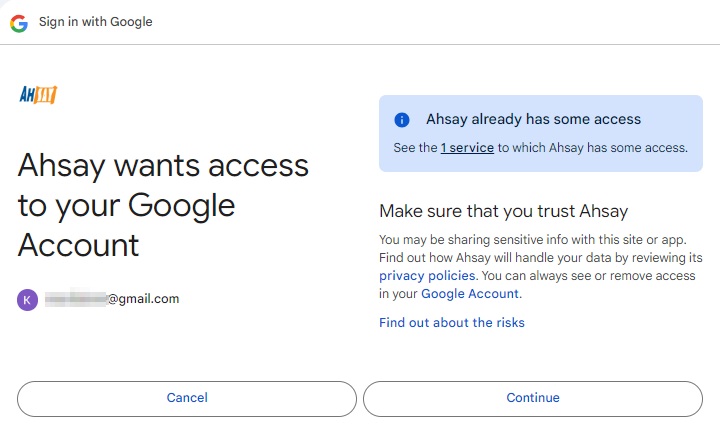
OneDrive
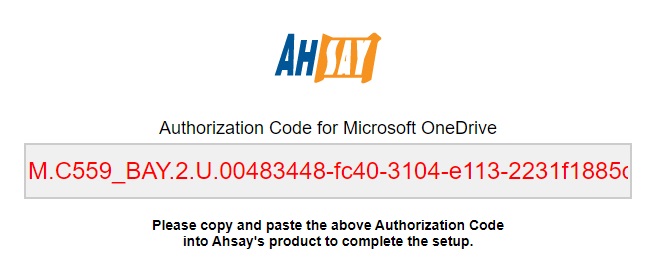
In this request for permission pages, you can see the “Ahsay” logo and the “Ahsay” wording. You can setup the destination settings in the policy group in your AhsayCBS to customize the branding.
Preparation
Before you customize the logo and application name on the request for permission page, you need to collect the following details:
Dropbox
- Application key
- Application secret
Google Drive
- Client ID
- Client Secret
- Native application redirect URI
OneDrive
- Client ID
- Client Secret
- Native application redirect URI
OneDrive for Business
-
Client ID
To retrieve the client ID:
- Login to Azure AD.
-
Click the portal menu located on the upper left side. Then click Home.
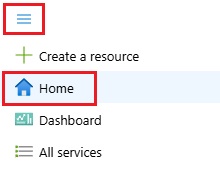
-
Click App registrations.
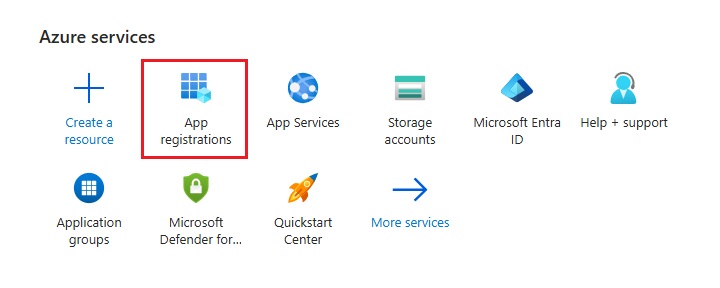
-
Click New registration.

-
Enter a name for the customized application, select the account type and provide the Redirect URI path. Click Register.
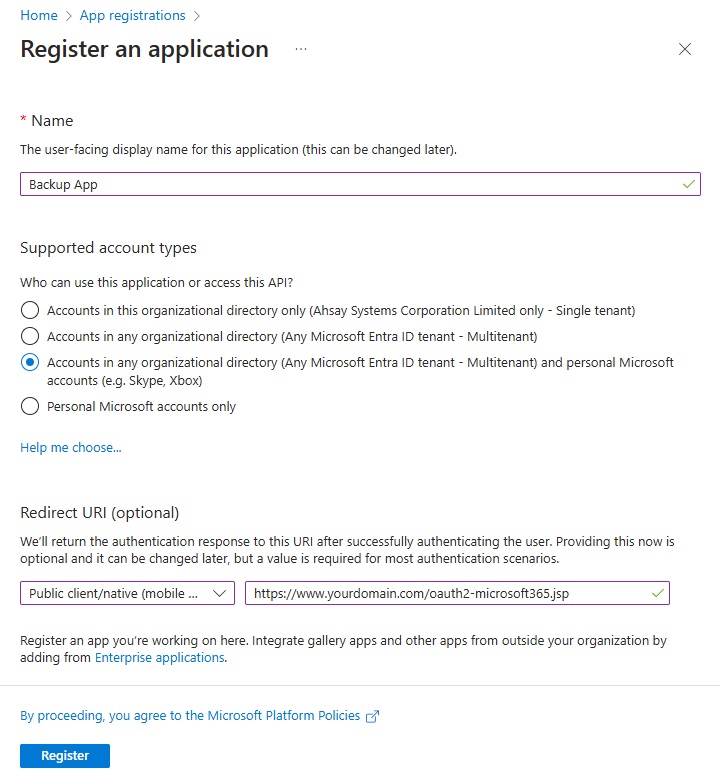
-
The “Application (client) ID” will be displayed, which is the Client ID required for OneDrive for Business customization.
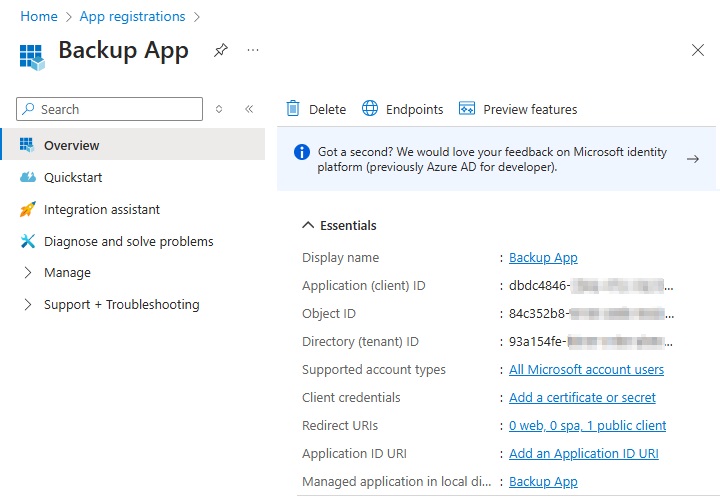
-
Finally, configure the permission required, click API permissions. Click Add a permission then search for the following and add the “Delegated permissions”.
-
Windows Azure Active Directory
Directory.AccessAsUser.All
User.Read -
Office 365 SharePoint Online
User.ReadWrite.All
Click Add Permissions to save once done.
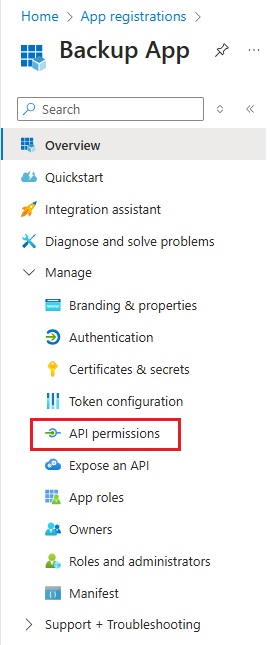
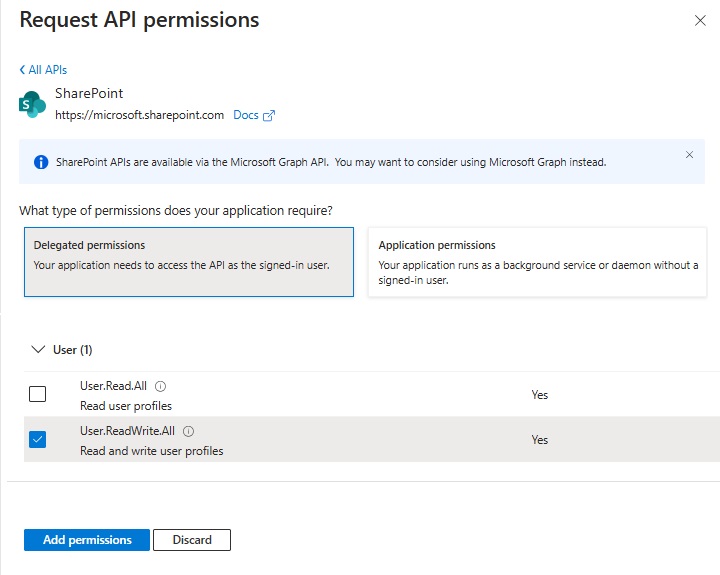
-
-
Native application redirect URI
To retrieve the Native application redirect URI:
-
Create a web page (.jsp) for request of the Authorization Code.
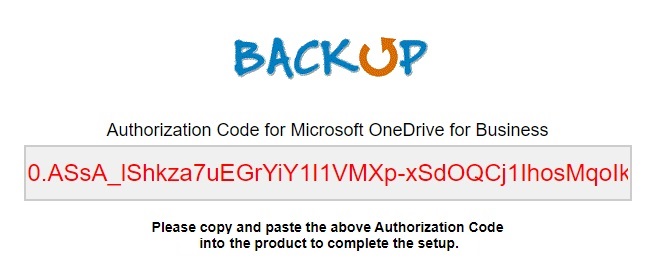
A sample format of the page:
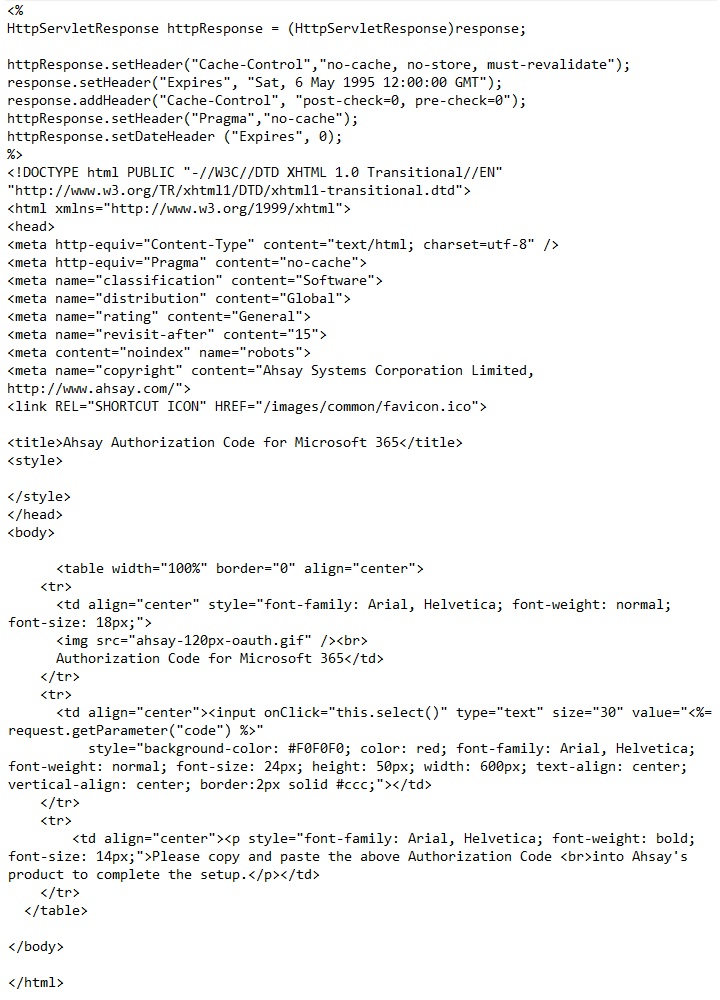
To obtain a sample jsp file click here.
The line value="<%=request.getParameter(“code”)%> are used for retrieving / displaying the authorization code, you must include this on the page.
It is expected that you have basic HTML knowledge to create the authorization code request page.
-
Once you have created the customized page, copy and place the jsp file in the AhsayCBS server at:
- on Windows %AhsayCBS_Install_Home%\webapps\ROOT
- on Linux %AhsayCBS_Install_Home%\webapps\ROOT
-
The Native application redirect URI will be:
https://%AhsayCBS_hostname%/%customized_page_name%.jsp
Where AhsayCBS_hostname is the hostname or IP address of your AhsayCBS server and customized_page_name is the name of the jsp file.
Example: https://www.yourdomain.com/oauth2-microsoft365-sample.jsp
-
Configure the Storage
After you have collected the above information from your cloud / developer account, you can put the relevant information in the policy settings of your AhsayCBS.
-
Go to Backup / Restore > Users, Groups & Policies > Policy Group. Select the policy group that you want to apply the setting.
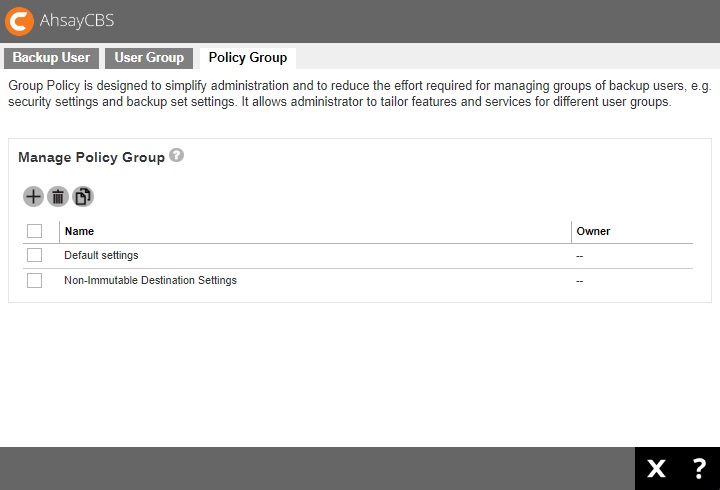
-
Click Backup Set Settings.
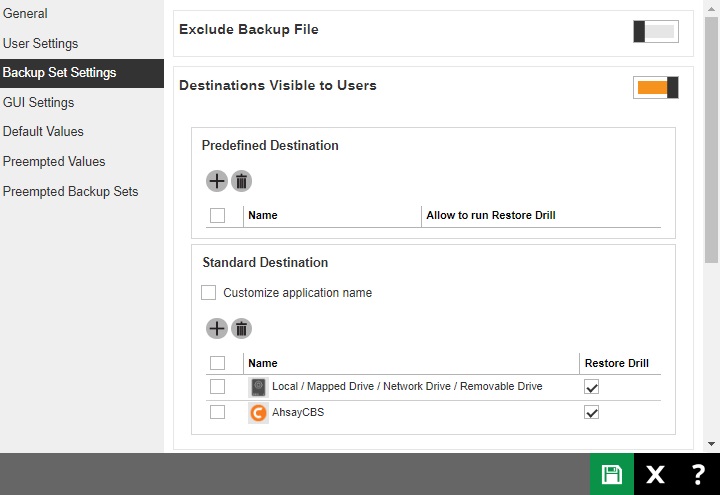
-
Under “Destinations Visible to Users”, add and customize the cloud storage that you want to use:
-
Dropbox
-
Click Create under “Standard Destination” then select Dropbox.
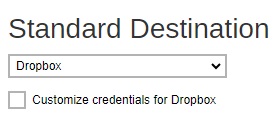
-
Tick the Customize credentials for Dropbox checkbox. Enter the "Application key" and "Application secret".

- Click Add then Save to save.
-
-
Google Drive
-
Click Create under “Standard Destination” then select Google Drive.
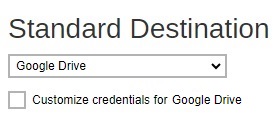
-
Tick the Customize credentials for Google Drive checkbox. Enter the "Client ID", "Client Secret" and "Native application redirect URI".
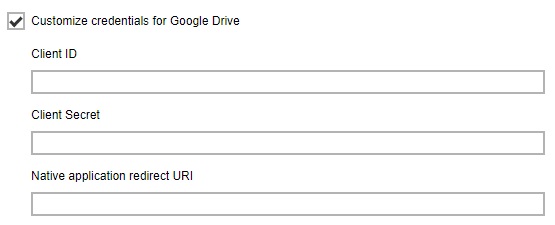
- Click Add then Save to save.
-
-
OneDrive
-
Click Create under “Standard Destination” then select OneDrive.
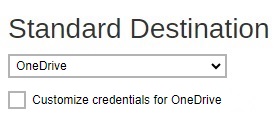
-
Tick the Customize credentials for OneDrive checkbox. Enter the "Client ID", "Client Secret" and "Native application redirect URI".
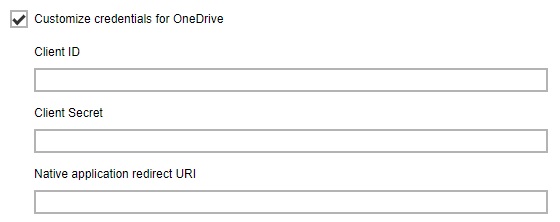
- Click Add then Save to save.
-
-
OneDrive for Business
-
Click Create under “Standard Destination” then select OneDrive for Business.
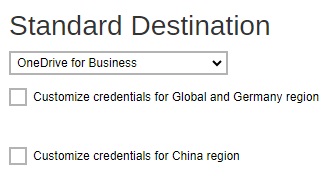
-
Tick the Customize credentials for Global and Germany region and/or Customize credentials for China region checkbox. Enter the "Client ID" and "Native application redirect URI".
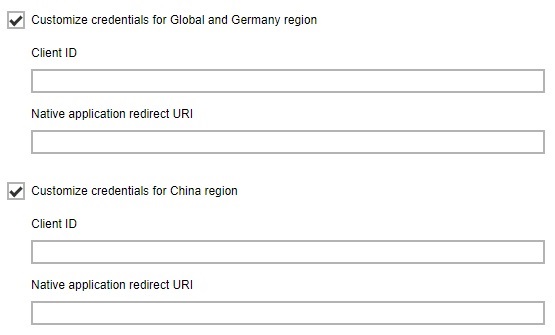
- Click Add then Save to save.
-
-
Customize the Folder/Bucket Name in Standard Destination
Go to Backup / Restore > Users, Groups & Policies > Policy Group. Click on the desired Policy Group, then click the Backup Set Settings section on the left. You can customize the application name (folder/bucket name) in different storages from there.
In the following example, we set the “Customize application name” as mybackup, when backup to the cloud storage (e.g.: Google Drive), the folder name “mybackup” will be created.
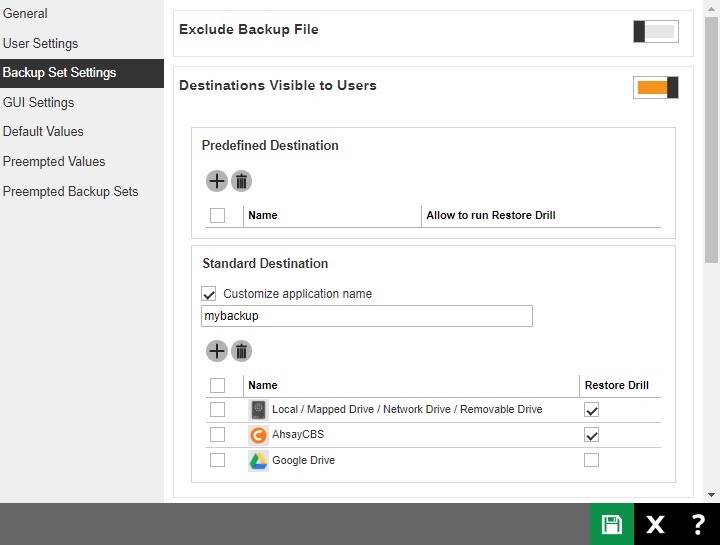
Example on Google Drive
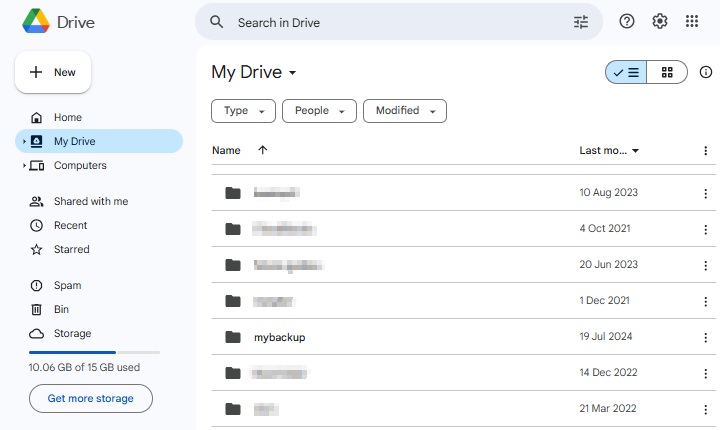
Customize the Storage in Predefined Destination
Go to Backup / Restore > Users, Groups & Policies > Policy Group. Click on the desired Policy Group, then click the Backup Set Settings section on the left. You can add a predefined destination for your clients, and your clients will be able to select the predefined destination when they create a new backup set.
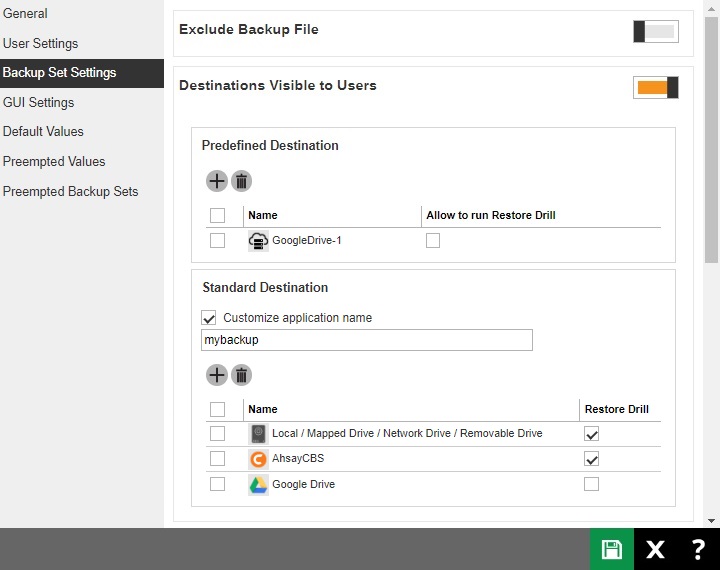
Example on AhsayOBM
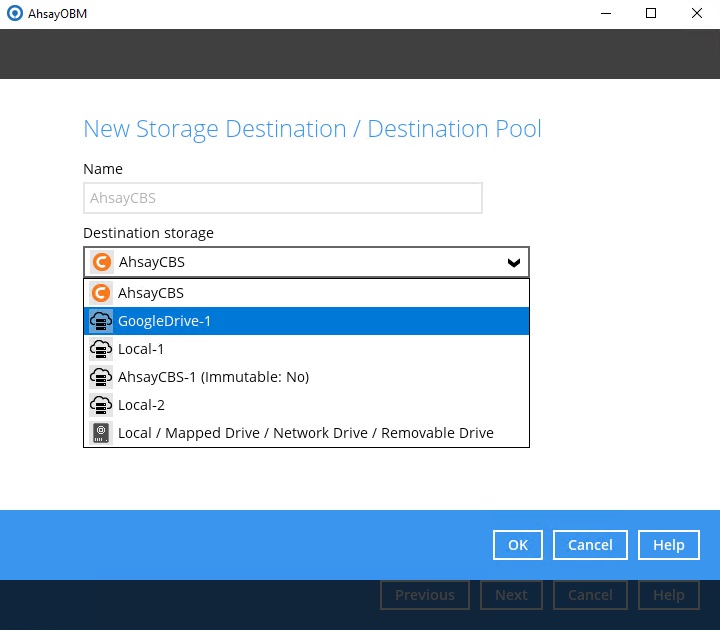
Microsoft 365 Backup Customization
For details on how to customize the Authorization code and Admin consent endpoint screen for the Microsoft 365 Global and China region please refer to discussion regarding Microsoft 365 Backup Customization.
Google Workspace Backup Customization
For details on how to customize the Authorization code screen for Google Workspace please refer to discussion regarding Google Workspace Backup Customization.

 AhsayCBS
AhsayCBS